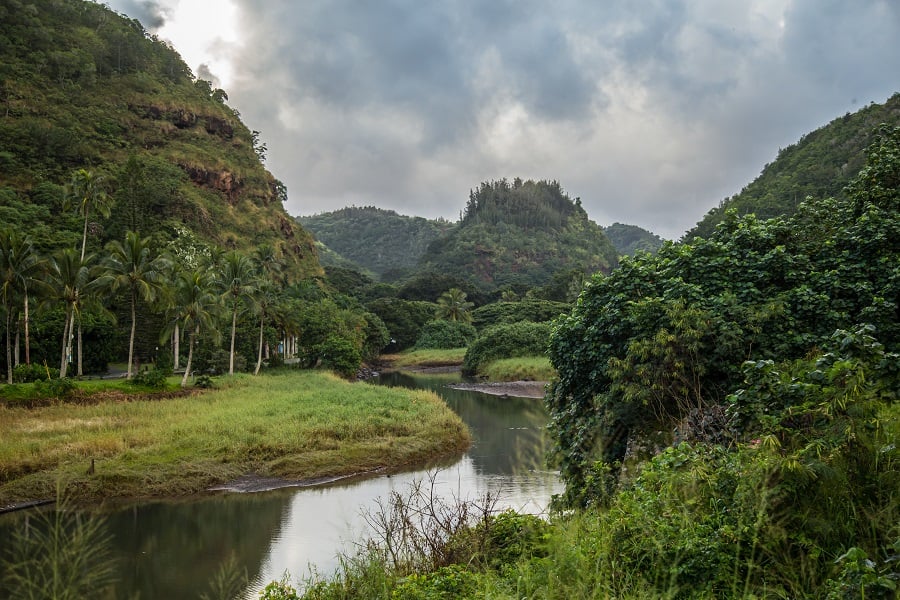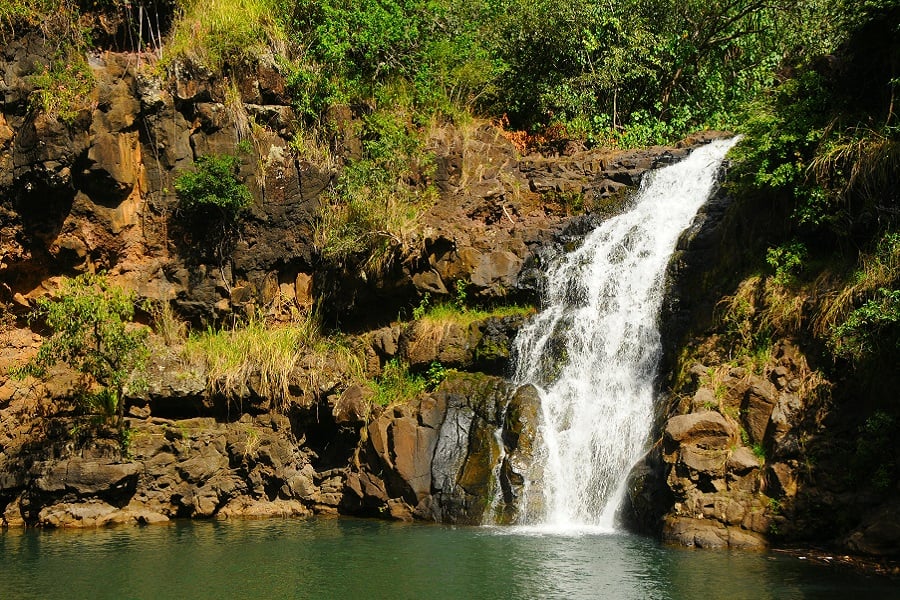Exploring the Spiritual History of Waimea Valley
April 29, 2019Written By Joseph Mains
photos above by Joseph Mains
It was a beautiful early morning watching the scenery slowly brighten from city to sugar cane to mountains on the way from ‘Alohilani into the sacred Waimea Valley. Known as “The Valley of the Priests,” Waimea Valley was the home to the Kahuna Nui high priests since 1092.
Peacocks were calling out their greeting as we approached the entrance to the visitors center, priming the air with an elevated sense of the moment as we met our tour guide and Waimea Valley Cultural Programs Manager, Ka’ulamealani Diamond. Before the tour started, Diamond chanted to her ancestors asking for permission and a blessing to enter one of the most sacred places in Hawaii. A gentle breeze rolled through the trees as she sang in Hawaiian, a sign that our presence was welcome.

We followed the gently meandering path as it ran along with Waimea River. Diamond narrated the history of the valley, the priesthood and the local connections that have been instrumental in protecting the land and ensuring its future. She paused to point out the native flora throughout the tour, showing us how each was used in everyday life and in ceremonies. Every flower, tree and root has its relationship to Hawaiian culture. We tracked our way by sacred archaeological sites on the valley floor. Diamond told us about others hidden high above in the cliffs overgrown by vegetation. She told us about the ways the priests used different structures in the valley, of their secret shrines and communications. And she shared examples of the interdependent relationship Hawaiians have with this place so palpably imbued with power.
Moving through the tour our steps felt lighter, reverent and humble as visitors to this holy area. Finally we reached our turn around point, the falls. People were swimming, snapping photos, quietly pausing to reflect on the awe of the moment. On our way out of the valley we took more time to explore short side trails. We discovered a natural auditorium that would be one of the best Oahu wedding venues imaginable, read plaques from the area’s more recent history as a botanical garden home to many endangered and rare plants and birds, and met an artist who makes historically accurate reproductions of ancient Hawaiian weapons using traditional methods and materials. (You can see an example of his work in the ‘Alohilani lobby, held alongside a reproduction of a sacred bird feather cloak worn by members of aha’ula — a council of 14 chiefs that ruled the islands for centuries.)

After picking up some books from the gift shop so we could continue our learning journey, we said mahalo and followed the river out to Waimea Bay, grabbing lunch at one of the many famous shrimp trucks along the North Shore before heading back to Waikiki.